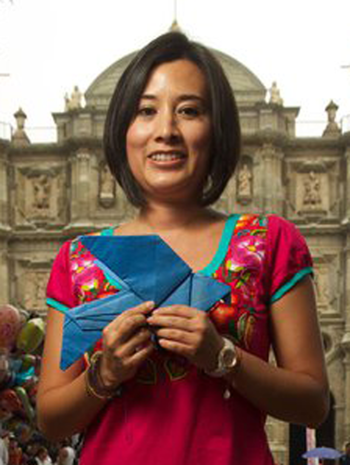Dr. Mónica Pacheco Silva

Landscape Archaeology and Architecture (LAA)
Lateinamerikanistik
10 – 07/2012
Magister Artium, Studium der Mesoamerikanistik, Universität Hamburg
01 – 12/2010
Wissenschaftliche Recherche und Archäologisches Kuratorium für die Ausstellung: „Herz der Maya“, Museum für Völkerkunde Hamburg
11 – 12/2004
Museo de las Culturas de Oaxaca, Oaxaca, Mexiko
02 – 04/2003
Museo de las Culturas de Oaxaca, Oaxaca, Mexiko
2001 – 2002
Verschiedene Feldarbeit:
Sondierung, Cholula, Puebla, Mexiko
Sondierung einem Dominikanerklosters, Tepapayeca, Puebla, Mexiko
Kartierung des Gebietes "Cerro Encantado", Oaxaca, Mexiko
Ausgrabung Begräbnisstätte, Guanajuato, Mexiko
08/2001 – 06/2002
Assistentin im Bereich Restaurierung vorspanischer Keramik, Museo de la Ciudad de Cholula, Puebla, Mexiko
The Lienzo Seler/Coixtlahuaca II in the Ethnologisches Museum Berlin: correlation of its topography with the geographic reality, the archaeological evidence and the ethnohistoric source
The Lienzo Seler II, a map-like document painted over cotton cloth bands, is the biggest and most complex of all the documents of its kind. Measuring a total of about 16 sqm, it was named after the German scholar Eduard Seler, who brought it at the turn of the twentieth century to the Ethnologisches Museum Berlin. Fabricated during the first decades of the colonial period in Oaxaca, Mexico, it recounts the history, mythology and landscape of Coixtlahuaca’s multiethnic lineages, as well as the territory of its city-state. The goal of the dissertation was to define the historical context in which the Lienzo Seler II was produced while considering the ethno-historical, geographical and archaeological data. From the analysis not only new insights on the creators of the document were gained but also and most importantly, a better and more complete understanding on how the inhabitants of the Coixtlahuaca valley then and now understand, interpret and interact with the landscape was achieved through the interdisciplinary approach and the fieldwork.
This dissertation project was successfully completed within the Research Group C-5 Common sense geography of the Excellence Cluster 264 Topoi.
2011
M. Pacheco-Silva/G. Sánchez Santiago, "Los instrumentos musicales Mayas en el Museo de Etnología de Hamburgo", in: B. Arroyo/A. Linares Palma/L. Paiz Aragón (Hrsg.), XXIV Simposio de Investigaciones Arqueológicas en Guatemala, 2010; Museo Nacional de Arqueología y Etnología ( 2011) [Span.].
M. Pacheco-Silva, "Die vorkolumbianische Musikinstrumente der Maya im Museum für Völkerkunde Hamburg", in: Mitteilungen aus dem Museum für Völkerkunde Hamburg, Neue Folge 41 (2011).
2010
M. Pacheco-Silva, "Die archäologische Maya-Sammlung des Museums für Völkerkunde Hamburg", in: Mitteilungen aus dem Museum für Völkerkunde Hamburg, Neue Folge 40 (2010).
